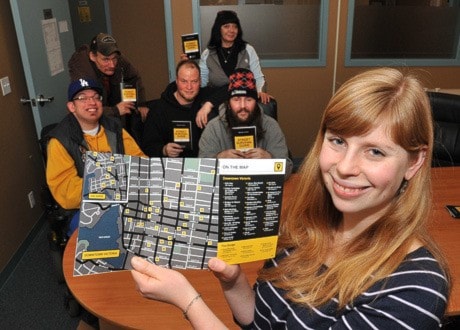When Jerry M. was evicted from a recovery house in the early months of 2010, he had only three thoughts on his mind: food, shelter and storage.
"I had to then start tapping into where I was going to sleep for the day, where I could eat," he said. "The only thing that was available were the places to get food and that was it. That's all I could access easily."
He's since found his way back from surviving on the streets of Victoria, but many of those hard-learned lessons and services discovered through word-of-mouth are now being put to good use.
On Thursday, Jerry and his colleagues unveiled Victoria's first Street Survival Guide, a single resource for the plethora of services available to the estimated 1,600 homeless people in the region.
"We put together a team of people who were homeless at some point or currently homeless, and they laid out the guide," said Andrew Wynn-Williams, executive director of the Greater Victoria Coalition to End Homelessness. "It has been designed by those on the street, for those on the street."
The guide is the result of six months of weekly meetings between the 10-person team. It breaks down the availability of shelters, meal service and even hygienic services such as haircuts and foot care around the downtown core.
"Showers, Internet and access to phones are a little further along (in the guide)," Jerry said.
The guide also includes a walking map and operating hours for each service, as well as legal information on police authority and camping.
"If I had access to something like this, my life would have been a lot easier," said David Small, a recovering heroin addict who is HIV positive. "So many people turned me away."
Small said the province needs to provide better funding for mental health and addictions, but he's glad the guide provides a list of current detox and other free health services.
The Street Survival Guide is modelled after similar guides created for residents in Vancouver's Downtown East Side and in Kelowna, Wynn-Williams said.
But Victoria's guide is the first to rely primarily on a panel of experts who have experienced homelessness firsthand.
"It's been a very progressive journey," Jerry said. "It was a hard thing, but I know the survival guide will make a lot of difference for people that are facing very similar issues more on a long-term basis."
Funding for the guide was provided by the United Way of Greater Victoria.
The Coalition is a partnership of local service providers, non-profit organizations, all levels of government, and the business, post-secondary and faith communities. Its mission is to end homelessness in Greater Victoria by 2018.
dpalmer@vicnews.com
